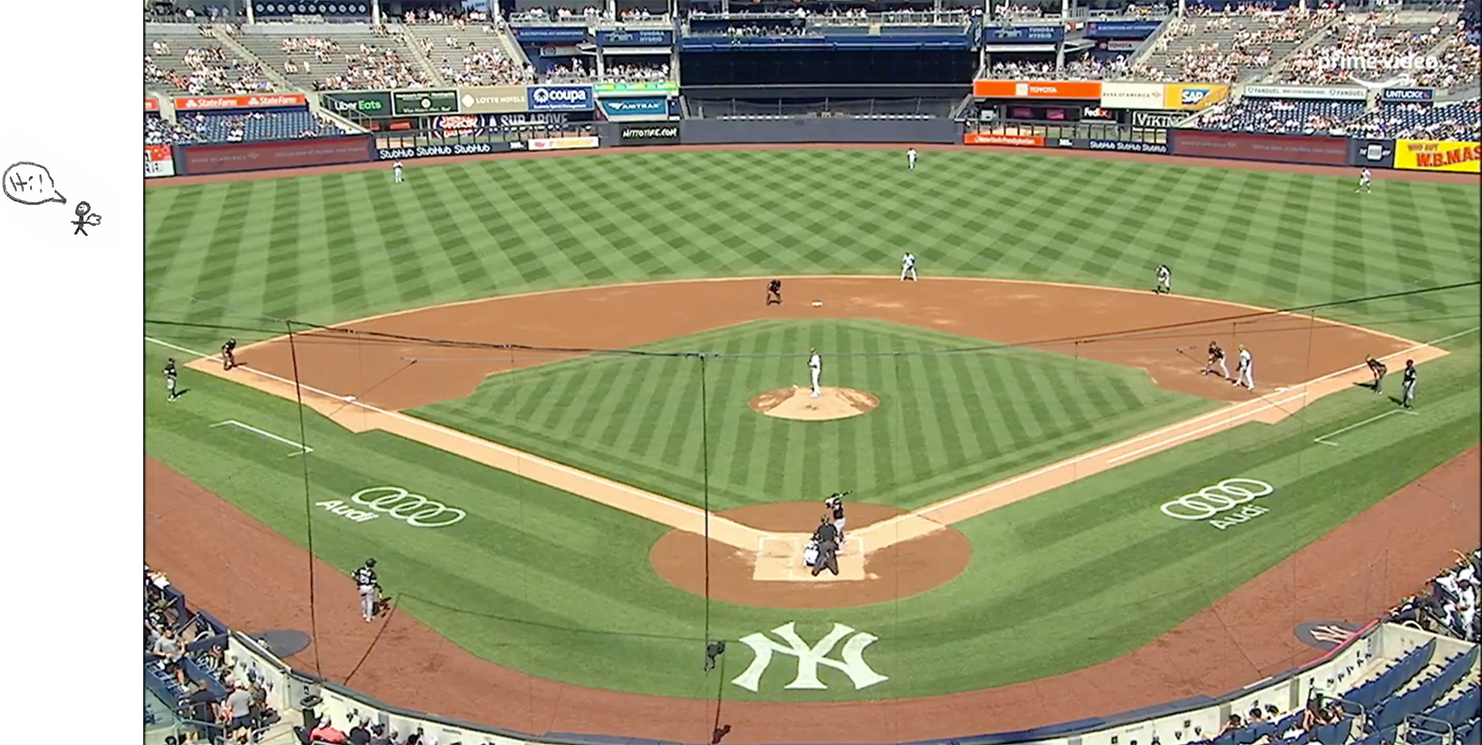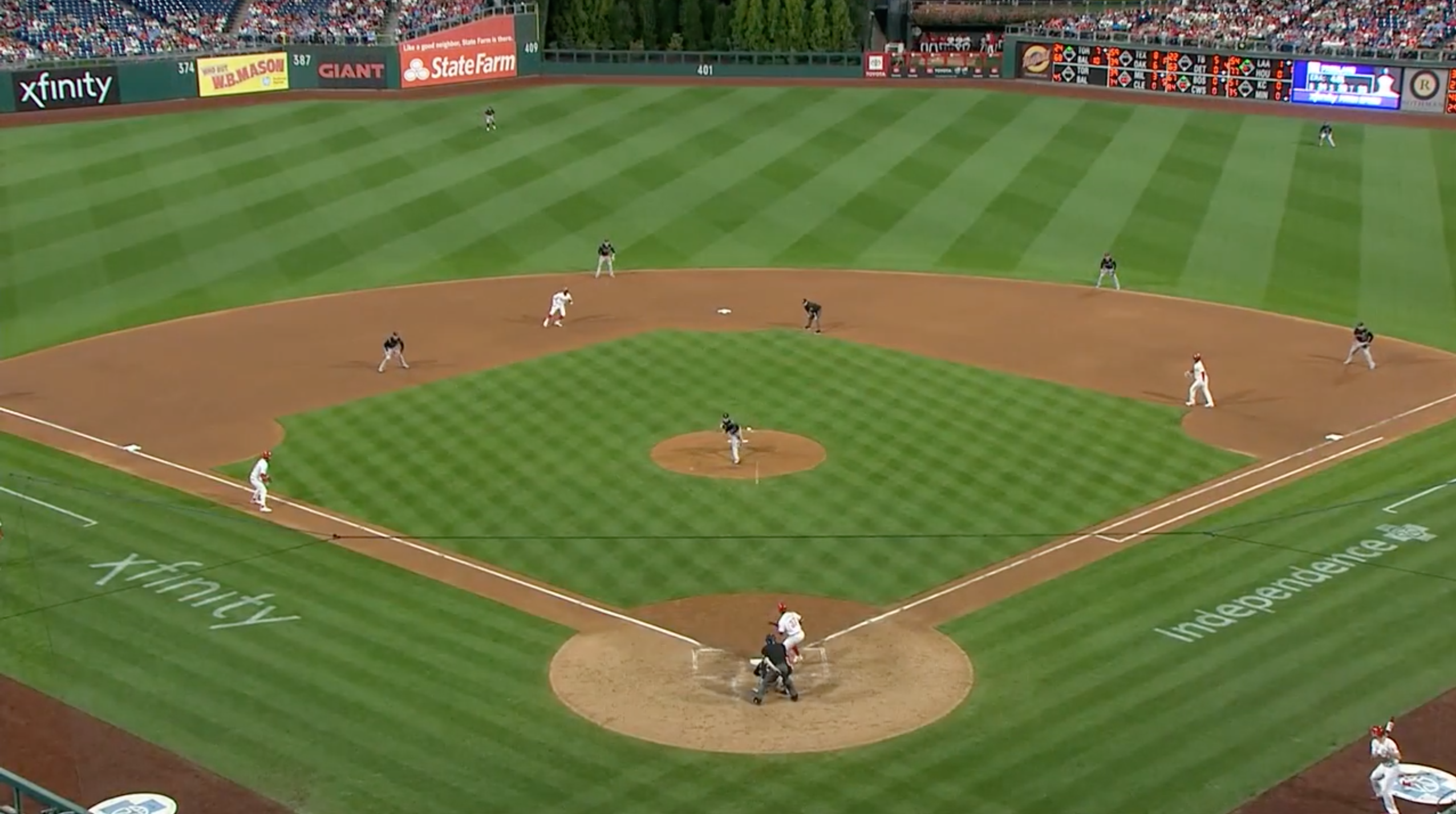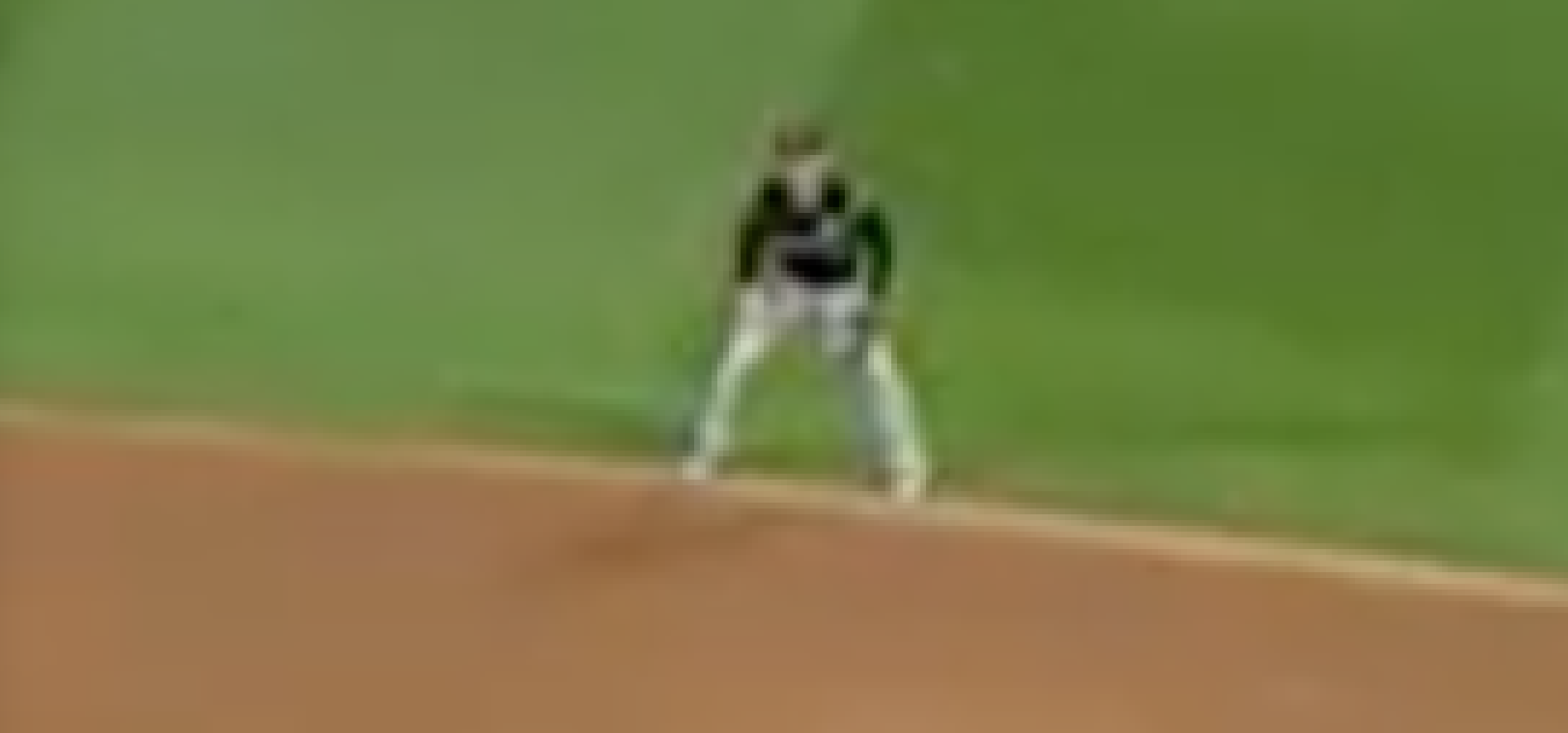The Bunt Double Is on the Verge of Extinction

Here’s something Joey Votto said while serving as a guest commentator in the Cincinnati broadcast booth in August: “The best in the game are matching the style of the game. The style of the game changes.” He was talking about hitting, but his point lined up with one of my favorite baseball metaphors. I often think of the game as an ecosystem. The players who thrive are the ones who are either built for or can adapt to the current game; changes to the style or the rules will always favor some players at the expense of others.
Changes will also favor some plays over others. As the infield shift rose to prominence, routine groundouts to shallow right field were fruitful and multiplied. Now that the shift has been outlawed, they’ll likely be pushed to the brink of extinction, and they’re taking one of baseball’s most exciting plays with them.
FanGraphs loves bunt doubles. This is a brief history of the bunt double by Jake Mailhot. This is a how-to manual for bunt doubles by the sainted Jeff Sullivan. In fact, he wrote about bunt doubles kind of a lot. As the shifting ecosystem means that bunt doubles are likely going the way of the dodo, it’s time to write the final chapter of their story.
That story might be older than you realize. In 1970, Willie McCovey drove in Willie Mays with a bunt double against the shift. In 2013, James Gentile put together a list of bunt doubles that goes all the way back to Jackie Robinson in 1951. Jake’s history was prompted by this beautiful Matt Carpenter bunt against the shift:
There here have been four bunt doubles since Carpenter’s masterpiece, and Statcast classified three of them as being against shifts. Let’s take a look and see what we’ll soon be missing.
We’re starting off very strong. Had Jake held off on his piece for just a couple months, he could have included a gem from Cavan Biggio. Helpfully, the Blue Jays broadcast shows the four-man outfield that Biggio was facing. It’s far from a traditional shift, but starting this year it would still be enough to get a team sent to baseball jail. The second baseman was stationed near the third base bag, presumably to keep the speedy Biggio from bunting. Here’s why that didn’t work out so hot:
Biggio didn’t just put the ball in the air; he ran a go route and took the top off the defense. His bunt had a launch angle of 37 degrees; the average bunt is -17.5. It also traveled 129 feet. According to Baseball Savant, only four balls have been bunted farther in the Statcast era, and I suspect that one or two might be misclassifications, since I’m not sure I’m prepared to live in a world where 201-foot sacrifice bunts to the first baseman are a thing.
The next bunt double also came from a Blue Jay. In August of 2021, Reese McGuire worked a 2–1 count off Trevor Stephan before bunting this 99.4-mph four-seamer down the line perfectly. That’s not easy to do.
You can’t see it in the clip, but Cleveland was in a partial shift. The shortstop was playing on the first base side, but the second and third baseman were still in relatively normal position because of the runner on first. Those precautions helped the defense not at all. José Ramírez charged the ball and tried to make an unlikely barehanded play, allowing both runners to take an extra base when he whiffed. That forced Amed Rosario to take off after the loose ball — which is fine, he loves running — and he committed baseball’s version of an NBA take foul on Lourdes Gurriel Jr. I personally think it would have been reasonable to score this play a single and an error (with some light pass interference thrown in for good measure).
The last bunt double against the shift happened on May 22, 2022, and it generally followed the same playbook.
Yoán Moncada placed a firm bunt right down the third base line, and there was nobody there to field it. He cruised into second, never even approaching top speed, as the ball almost got all the way to the left fielder because there was nobody at all on the left side of the infield. The Yankees were also playing a four-man outfield. I pulled a screenshot, but the fourth outfielder was so far over in the left field corner that he’s out of frame. I helpfully put him back in for you.

So that’s it. That’s the last of the bunt doubles against the shift, except for one thing. I mentioned earlier that there had ben four bunt doubles since Jake’s article in 2019, and three of them were against the shift. Here’s the fourth, from 2021:
Well that’s fun. Another over-aggressive third-baseman goes for a do-or-die play, allowing two runs to score in the process. The clip doesn’t let you see the defensive setup, so I pulled a screenshot. The left fielder is again out of frame, but that’s not what I want you to see. Take a second and try to spot it.

Maybe it would help a bit if I zoomed in way too far on the second baseman. I know he wasn’t really involved in the play, but where are his tiny pixelated heels?

They’re on the outfield grass! That might not be a shift by 2021 standards, but by the 2023 rulebook it’s — well, actually I’m not sure. I haven’t read the 2023 rulebook. I don’t think it’s available yet. One MLB.com article says infielders “must be within the outer boundary of the infield,” whatever that means. Another one says they must have “cleats in the dirt.” That second baseman clearly has his toes in the dirt, so maybe he’s fine; I don’t know if the entire foot is required to be in the dirt. But if so, all four of the last bunt doubles (and all of the bunt doubles in the last four years) came on shifts.
As Jeff Sullivan noted in his manual, taking advantage of the shift is isn’t the only method for bunting your way to second, even if it is the most popular one. You could hope that the infielders have a calamitous, Three Stooges-style pileup:
If causing a kerfuffle isn’t your cup of tea, that’s totally understandable; there are other options. You could always bunt the ball to third and hope the third baseman goes for the barehand. It’s a popular move. Or you could follow Orlando Arcia’s lead and bunt the ball really hard when the infielders are playing shallow.
Putting together the various histories, there have been 54 bunt doubles recorded in MLB history, so far as we know. They’ve always been an endangered species. I’m sure there are others lost to the sands of time, and I’m sure there will be another one at some point. The new rules could affect bunts in unexpected ways. Maybe the pickoff limit, pitch clock, and larger bases could increase the value of speed, creating more plate appearances for players who bunt more often. For now, though, the best avenue for their survival has been blocked off.
Davy Andrews is a Brooklyn-based musician and a writer at FanGraphs. He can be found on Bluesky @davyandrewsdavy.bsky.social.

Admittedly, when I read the headline I thought of a group of protesters chaining themselves to a bat rack in order to save the endangered bunt double. Long work day…